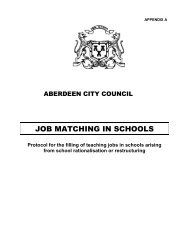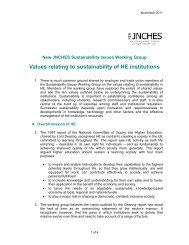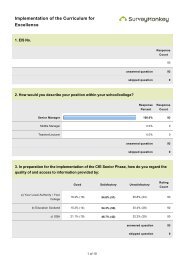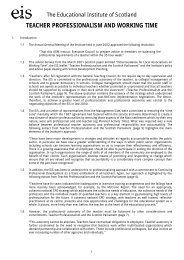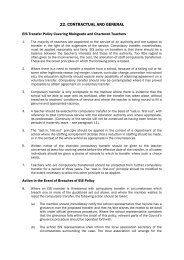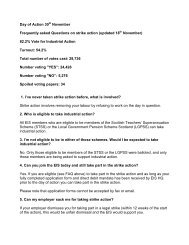Download EIS Reps Handbook
Download EIS Reps Handbook
Download EIS Reps Handbook
You also want an ePaper? Increase the reach of your titles
YUMPU automatically turns print PDFs into web optimized ePapers that Google loves.
3.3 The impact of the Authority’s Improvement Plan on schools and also theexistence of cluster improvement plans have added to the difficulty ofmanaging workload.4. The School Improvement Plan: General PrinciplesThe School Improvement Plan, which is a statutory requirement, is central to the wayin which the school operates and therefore should be informed by a number ofagreed principles.4.1 The Plan must be realistic and achievable both in terms of the timeframes forits contents to come on stream and the time resource made available for Planrelatedwork to be undertaken in the course of the teachers’ contractualworking day, week and year.4.2 Whilst the Plan should have regard to government policy (especially thecontext of Curriculum for Excellence) and to the local authority plan, schoolsshould be able to determine their own priorities within this framework. Inparticular, a balance needs to be maintained between authority/clusterpriorities and the capacity and needs of individual establishments. This isespecially relevant to smaller schools.4.3 The School Improvement Plan is an important element in addressing issues ofteacher workload, in particular through the management of teachers’ workingtime. The Plan should be sufficiently detailed and costed to allow for anevaluation of its feasibility when measured against the available resources,including teacher time for familiarisation with key documents and newresources, developing materials and participation in staff developmentactivities. The new requirements of summative assessment will need to betaken into consideration as well.4.4 The Plan should set out focussed priorities for establishments, relatively few innumber, and avoid developing lengthy wish lists.4.5 The Improvement Plan could involve a certain amount of devolution ofdecision-making and implementation. For example, in secondary schools,subject departments should have a direct input to the process of formulatingthe draft Plan and a direct role in implementing specific elements within theapproved Plan. A similar approach may be taken in larger primary schools, withgroupings of staff from different stages providing their ideas.4.6 To be effective, the planning process in schools should be cognisant of allaspects of the work of the school, including ongoing maintenance andconsolidation of work, resource and financial management, workload issuesand staff support.5. The School Improvement Plan: The Process of Formulating the Plan5.1 School Improvement Planning processes should reflect good collegiatepractice within a school and seek to ensure that all teachers have theopportunity to have an input.5.2 The planning process should itself be the basis of both prior and continuingconsultation with all teaching staff.5.3 The planning process should be planned in advance to ensure that identifiedcollegiate time is made available for all staff to have an appropriate input at anappropriate time to the planning process.61September 2012




